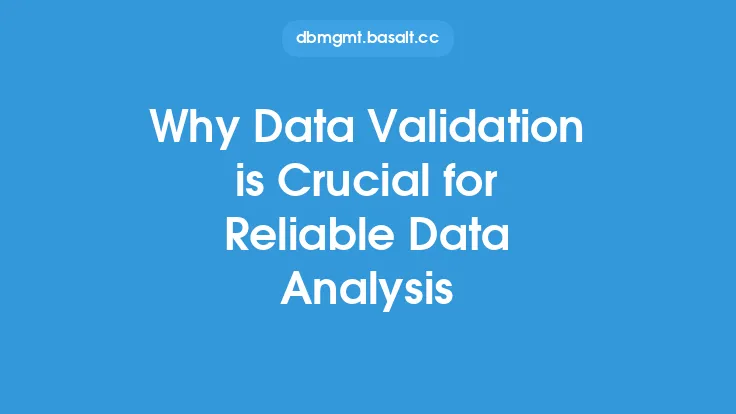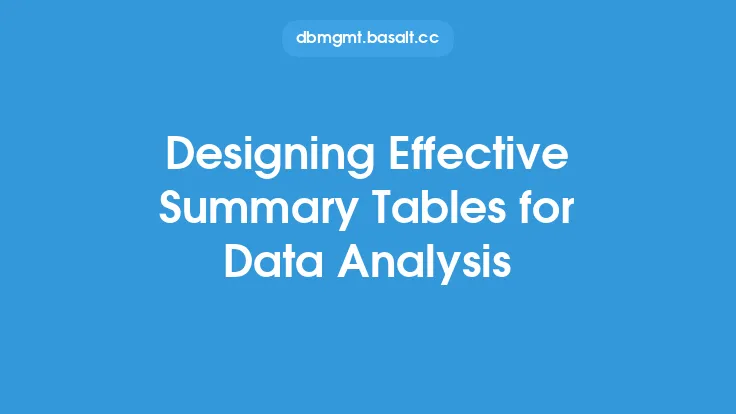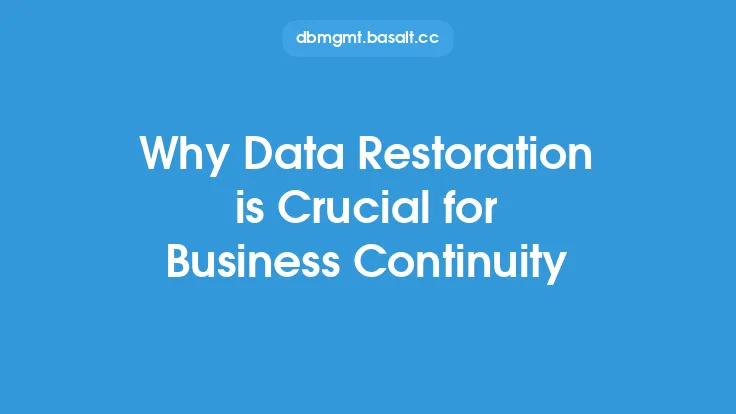Data analysis is a critical component of any organization's decision-making process, as it enables businesses to extract insights from their data and make informed decisions. However, the quality of the analysis is heavily dependent on the quality of the data being analyzed. One of the key factors that can affect the quality of data analysis is the standardization of the data. Data standardization refers to the process of organizing and formatting data in a consistent and standardized way, making it easier to analyze and interpret.
Introduction to Data Standardization
Data standardization is essential for effective data analysis because it enables organizations to compare and contrast different data sets, identify trends and patterns, and make accurate predictions. Standardized data also facilitates the integration of data from different sources, making it possible to analyze data from multiple systems and applications. Furthermore, data standardization helps to reduce errors and inconsistencies in the data, which can lead to incorrect conclusions and decisions. By standardizing data, organizations can ensure that their data is accurate, complete, and consistent, which is critical for making informed decisions.
Benefits of Data Standardization
The benefits of data standardization are numerous and well-documented. Some of the key benefits include improved data quality, increased efficiency, and enhanced decision-making. Standardized data is easier to analyze and interpret, which enables organizations to make faster and more accurate decisions. Additionally, data standardization facilitates the sharing and collaboration of data across different departments and teams, which can lead to new insights and discoveries. Standardized data also enables organizations to comply with regulatory requirements and industry standards, which can help to reduce the risk of non-compliance and associated penalties.
Data Standardization Techniques
There are several data standardization techniques that organizations can use to standardize their data. Some of the most common techniques include data profiling, data cleansing, and data transformation. Data profiling involves analyzing the data to identify patterns, trends, and anomalies, while data cleansing involves removing errors and inconsistencies from the data. Data transformation involves converting the data into a standardized format, such as a specific data type or format. Other techniques include data aggregation, data grouping, and data sorting, which can help to simplify and summarize the data.
Data Standardization Tools and Technologies
There are several data standardization tools and technologies that organizations can use to standardize their data. Some of the most common tools include data integration platforms, data quality tools, and data governance platforms. Data integration platforms enable organizations to integrate data from different sources and systems, while data quality tools enable organizations to profile, cleanse, and transform their data. Data governance platforms enable organizations to manage and govern their data, including defining data standards and policies. Other tools and technologies include data warehouses, data lakes, and big data analytics platforms, which can help to store, process, and analyze large volumes of data.
Challenges and Limitations of Data Standardization
While data standardization is essential for effective data analysis, there are several challenges and limitations that organizations may face. Some of the key challenges include data complexity, data volume, and data variety. Large and complex data sets can be difficult to standardize, while high-volume data can be challenging to process and analyze. Additionally, data from different sources and systems may have different formats and structures, which can make it difficult to standardize. Other challenges include data quality issues, such as errors and inconsistencies, which can affect the accuracy and reliability of the data.
Best Practices for Data Standardization
To overcome the challenges and limitations of data standardization, organizations can follow several best practices. Some of the key best practices include defining clear data standards and policies, establishing a data governance framework, and implementing data quality controls. Organizations should also prioritize data standardization, making it a key component of their data management strategy. Additionally, organizations should use data standardization tools and technologies, such as data integration platforms and data quality tools, to simplify and automate the standardization process. Other best practices include monitoring and measuring data quality, providing training and support to users, and continuously reviewing and updating data standards and policies.
Conclusion
In conclusion, data standardization is a critical component of effective data analysis, enabling organizations to extract insights from their data and make informed decisions. By standardizing their data, organizations can improve data quality, increase efficiency, and enhance decision-making. While there are several challenges and limitations to data standardization, organizations can overcome these by following best practices, such as defining clear data standards and policies, establishing a data governance framework, and implementing data quality controls. By prioritizing data standardization and using the right tools and technologies, organizations can unlock the full potential of their data and make better decisions.





